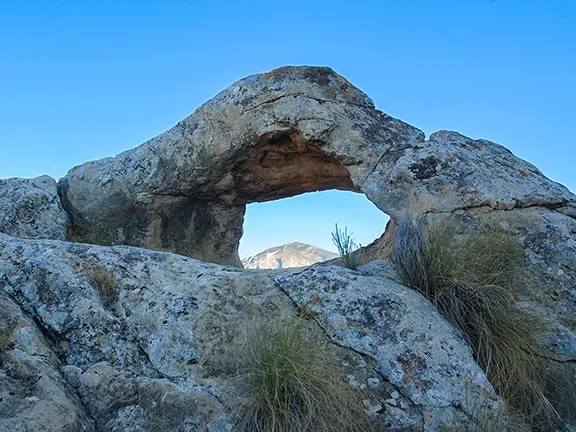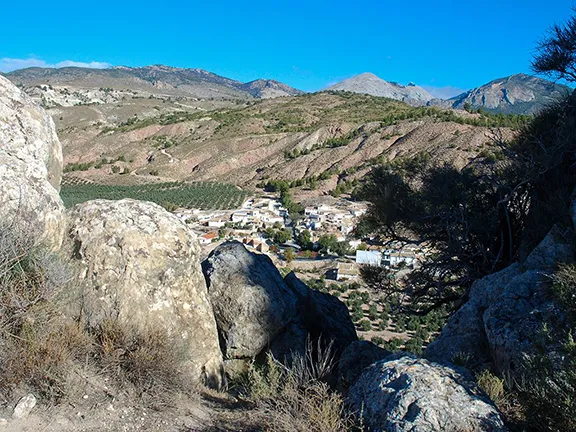Los Castellones de Ceal, is one of the most important Iberian settlements discovered in Jaen province to date although there is little for the visitor to see.
By Nick Nutter | Updated 5 Sep 2022 | Jaén | Places To Go |
Login to add to YOUR Favourites or Read Later


Castellones de Ceal
The settlement of Ceal, also called Los Castellones de Ceal, is one of the most important Iberian settlements discovered in Jaen province to date. Located five kilometers from Hinojares, a small town in the Sierra de Cazorla region. It is accessed by the road that connects Hinojares and Huesa, in the vicinity of the village of Ceal. The site was discovered in the 1950s when the road was built.


Castellones de Ceal stone arch
The Iberian oppidum or settlement, is on a promontory, located on a circular plateau, with the Ceal river valley to the north and the Guadiana Menor river valley to the west and south. The fertile ground in the two valleys and where they meet in the ‘v’ of the promontory, would have been used by the Iberians for crops and animal husbandry.


Castellones de Ceal oppidum
The town was fortified, forming an oppidum, and had great importance on the route between the Guadalquivir valley and the southeast of the Peninsula. Los Castellones de Ceal is also on the border between the Iberian territories of the Bastetanos, with a centre in Baza, and los Oretanos, with a centre in Linares. The settlement would provide protection, rest and food to the trade caravans loaded with merchandise.


Castellones de Ceal - Ceal hamlet
On the plateau, as well as on the upper part of the slopes, the remains of walls and residential buildings are abundant. On the north slope there is a necropolis, where some fragments of hand-modeled ceramics have been found, showing remains of structures to which strata of ashes and animal bones are associated. A princely tomb excavated within the Castellones necropolis has been discovered, which bears similarities to the famous Toya burial chamber that is only a few kilometres away at Peal de Becerro.


Castellones de Ceal - fortified wall
The oldest phase of the necropolis is located around the 7th century BC, verified thanks to a series of tombs discovered, however it did not prosper and was abandoned until around 400 BC. The oppidum survived into the Roman period but was then destroyed by fire in about 200 BC.


Castellones de Ceal - necropolis
The fire does not necessarily indicate a violent end to the settlement. It was a fairly common practice since the Neolithic period for settlements to be occupied for a period and then destroyed by fire, a sort of ritual purification, before the population moved on elsewhere.